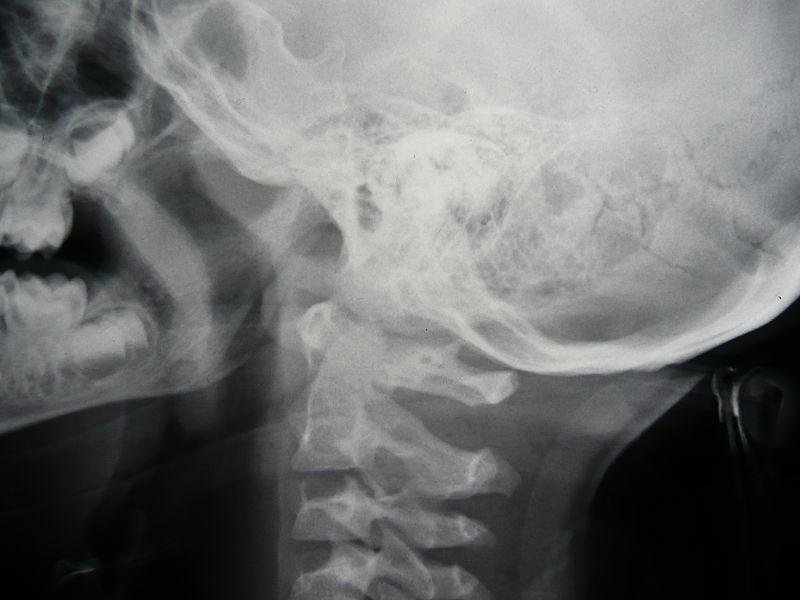X-ray, human spine. (CC/Nevit Dilmen)
Dr. Sergio Canavero, a member of the Turin Advanced Neuromodulation Group, has published a paper saying we now have the technology to complete the transplant of a human head onto another human body.
Robert White successfully transplanted the head of a rhesus monkey onto the body of another rhesus in 1970, but so far, scientists have been unable to connect spinal cords, leaving the animals paralyzed below the point of transplant.
“The greatest technical hurdle to cephalosomatic linkage [head transplant] is of course the reconnection of the donor’s and recipients spinal cords. It is my contention that the technology only now exists for such linkage,” Canavero wrote, citing recent advances in reconnecting surgically severed spinal cords.
Much of the procedure remains the same as in the old experiments. The head to be transplanted is cooled to between 12°C and 15°C (54.6°F and 59°F). Surgeons then have one hour to remove both heads at the same time, and re-connect the transplant head to the circulatory system of the donor body.
During the reconnection procedure, the donor body must be chilled and total cardiac arrest induced. Once the head is reconnected, the heart of the donor body can be restarted.
Once the head is reconnected, Canavero says surgeons may now be able to proceed to reconnect the spinal cord. A head to body spinal connection has never been attempted in animals, but Canavero points to studies in which scientists have restored limited connectivity to a severed spinal cord in a rat.
In his paper, Canavero proposes cutting spinal cords with an extremely sharp knife, then mechanically connecting the spinal cord from one head to another body.
"It is this "clean cut" [which is] the key to spinal cord fusion, in that it allows proximally severed axons to be ‘fused’ with their distal counterparts. This fusion exploits so-called fusogens/sealants….[which] are able to immediately reconstitute (fuse/repair) cell membranes damaged by mechanical injury, independent of any known endogenous sealing mechanism."
Canavero speculates that plastics like polyethylene glycol (PEG) could be used to accomplish this fusing, citing research showing that PEG has allowed the fusing of severed spinal cords in dogs.
Patients with muscular dystrophy, or paraplegics with enough spinal cord left intact to allow for a transplant, could in theory achieve full use of a donor body. As long as they have the $13 million Canavero estimates a full head transplant would cost.















